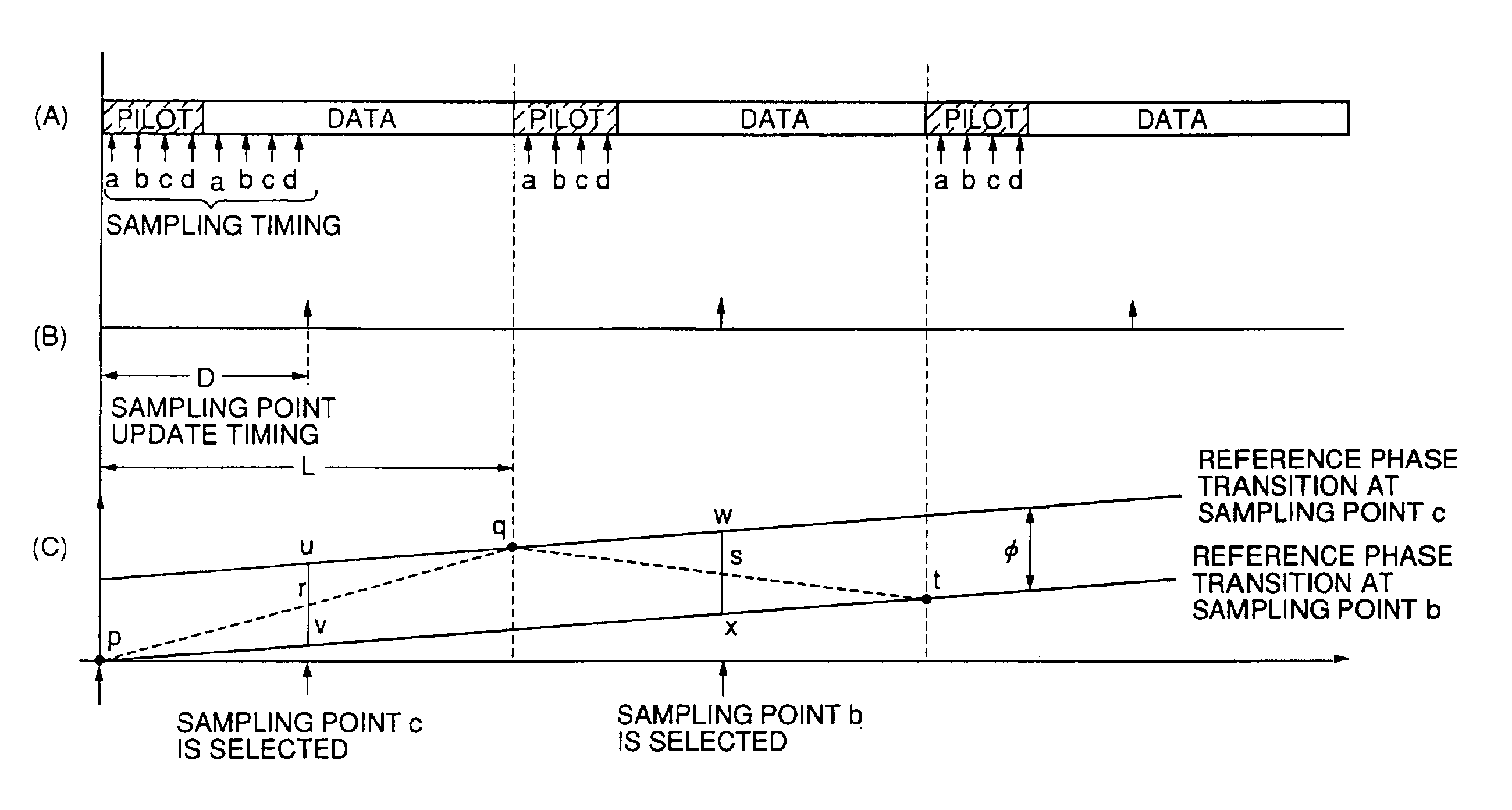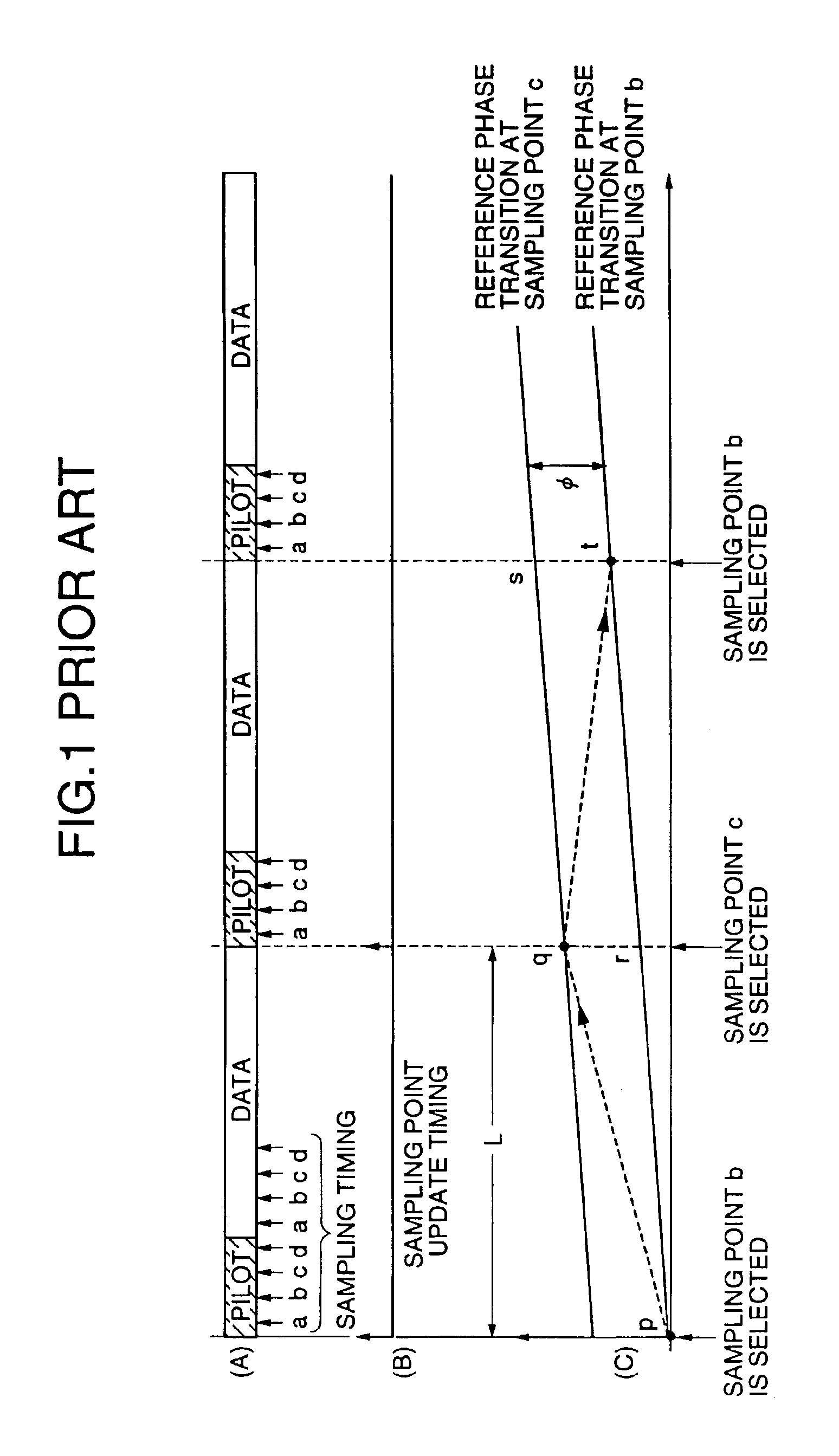Interpolation synchronous detection method and radio communication system
a technology of interpolation synchronous detection and radio communication system, which is applied in the direction of error prevention, multi-path communication, digital transmission, etc., can solve the problems of difficult removal of interference influences, inability to remove interference influences due to multi-path transmission, and inability to perform interpolation synchronous detection. achieve the effect of improving the accuracy of demodulated data and minimizing transfer function errors
- Summary
- Abstract
- Description
- Claims
- Application Information
AI Technical Summary
Benefits of technology
Problems solved by technology
Method used
Image
Examples
first embodiment
[0039]FIG. 3 shows the present invention. Referring to FIG. 3, a transmission section (not shown) modulates, at a transmission modulation stage, the data of a reception baseband signal 100 input to an A / D converter 10 which is to be transmitted according to a modulation scheme such as BPSK, QPSK, FSK, or QAM. The modulated signal is converted into an RF signal and power-amplified to be radiated from an antenna. The radiated transmission signal is received by the reception antenna of a mobile unit or base station through a plurality of spatial transmission paths. The received signal is then converted into a reception baseband signal by a reception section through an RF amplification stage, band-pass filter, mixer, IF amplification stage, and the baseband demodulation stage of a detection means. In this reception baseband signal 100, therefore, the transfer function becomes complicated through paths from the transmission modulation stage to the baseband demodulation stage according to...
second embodiment
[0044]FIG. 4 shows the arrangement of a reception section in a communication system according to the present invention. Referring to FIG. 4, a reception signal 190 received from an antenna is input to a radio section 70. A transmission section in a mobile unit or base station (not shown) modulates, at a transmission modulation stage, the data to be transmitted according to a modulation scheme such as BPSK, QPSK, FSK, or QAM. The modulated signal is converted into an RF signal, power-amplified, and radiated from the antenna. The radiated transmission signal is received by the reception antenna of a mobile unit or base station through a plurality of spatial transmission paths. As a consequence, the reception signal 190 is obtained. The radio section 70 includes an RF amplification stage, band-pass filter, local oscillator, frequency conversion mixer, IF amplification stage, and baseband demodulation stage as a detection means. The output from the baseband demodulation is the reception...
PUM
 Login to View More
Login to View More Abstract
Description
Claims
Application Information
 Login to View More
Login to View More - R&D
- Intellectual Property
- Life Sciences
- Materials
- Tech Scout
- Unparalleled Data Quality
- Higher Quality Content
- 60% Fewer Hallucinations
Browse by: Latest US Patents, China's latest patents, Technical Efficacy Thesaurus, Application Domain, Technology Topic, Popular Technical Reports.
© 2025 PatSnap. All rights reserved.Legal|Privacy policy|Modern Slavery Act Transparency Statement|Sitemap|About US| Contact US: help@patsnap.com



